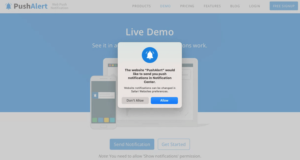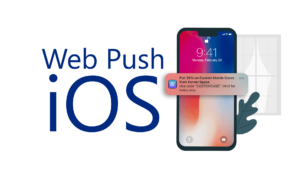
Apple will continue to support PWAs in the EU
In a surprising turn of events, Apple has decided to reverse its earlier stance on home screen web apps (also known as Progressive Web Apps or PWAs) for iPhone users in the European Union (EU). The company’s decision to no longer support these web apps had caused quite a stir, but now, as of March 1, 2024, EU users can breathe a sigh of relief: home screen web apps are here to stay.
What Are Home Screen Web Apps?
Before we dive into the details, let’s quickly recap what home screen web apps are. These are essentially websites that you can install as standalone apps on your iOS device. By adding them to your home screen, you gain quick access to your favorite websites without needing a dedicated iOS app. It’s a nifty feature that bridges the gap between native apps and web content.
The Initial Decision
So, why did Apple initially decide to pull the plug on home screen web apps in the EU? The answer lies in the Digital Markets Act (DMA), a new EU regulation aimed at promoting competition in markets dominated by tech giants. Under the DMA, companies like Apple are required to open up their core platforms to allow alternative marketplaces and foster innovation.
Apple, in its compliance with the DMA, made several changes. One of these changes was to allow alternative app marketplaces to compete with the App Store for app distribution on iPhones. However, interpreting the regulations led to some controversial decisions.
The Controversy
Developers and users were taken aback when they discovered that the latest beta version of iOS removed home screen web app capabilities. These apps, which had become a convenient way to access specific websites, suddenly vanished. The move was met with criticism from various quarters, including other tech giants like Meta, Microsoft, and Spotify.
The crux of the issue was that developers might end up paying more to distribute their apps through alternative marketplaces than they would within the official App Store. This unexpected twist left many scratching their heads and wondering if Apple’s interpretation of the DMA was truly aligned with its intent.
The Reversal
Thankfully, Apple listened to the feedback. On March 1, 2024, the company announced that it would restore home screen web app functionality for EU users. The upcoming iOS 17.4 update will bring back this feature, allowing users to once again install and use web apps directly from their home screens.
Apple’s Full Statement
Previously, Apple announced plans to remove the Home Screen web apps capability in the EU as part of our efforts to comply with the DMA. The need to remove the capability was informed by the complex security and privacy concerns associated with web apps to support alternative browser engines that would require building a new integration architecture that does not currently exist in iOS.
We have received requests to continue to offer support for Home Screen web apps in iOS, therefore we will continue to offer the existing Home Screen web apps capability in the EU. This support means Home Screen web apps continue to be built directly on WebKit and its security architecture, and align with the security and privacy model for native apps on iOS.
Developers and users who may have been impacted by the removal of Home Screen web apps in the beta release of iOS in the EU can expect the return of the existing functionality for Home Screen web apps with the availability of iOS 17.4 in early March. – Statement Via 9to5Mac.
What Lies Ahead
As the DMA officially takes effect in the EU, Apple is navigating a delicate balance. While complying with the regulations, the company aims to maintain a seamless user experience and keep developers satisfied. The battle between tech giants and regulatory bodies continues, but for now, EU iPhone users can enjoy the convenience of home screen web apps without interruption.
In conclusion, Apple’s reversal is a win for users who rely on these web apps daily. Whether you’re checking the weather, reading news, or managing your finances, having quick access to your favorite websites just got a little easier. All web app capabilities including push notifications, faster loading, offline access are here to stay.


